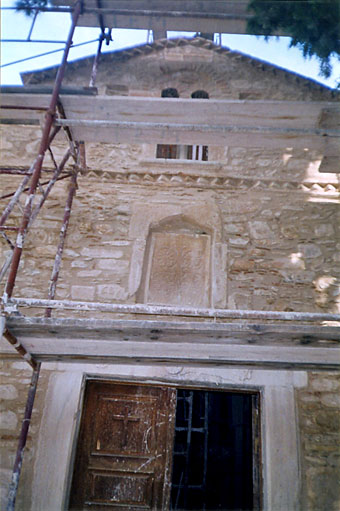
 |
 |
 |
 |
Type:
Date: 11th-12th (?) century
Description:
The Monastery is located close to the ancient quarries in Kara. It was founded in the Byzantine years (around the 12th century), since it is mentioned in a 11th – 12th century Record (of an unknown monastery in Attica). A church had existed in the position of the Monastery since the early Christian years, which apparently had been built on an ancient temple of Apollo dated to the 4th century B.C. It is next cited in post Byzantine years and more specifically in 1575, a date engraved on a marble fragment enwalled into the Katholikon entrance. In 1644, it is mentioned in a document published by the bishop of Athens, Parthenios. In 1676, the travelers Spon and G. Wheeler refer to it. The katholikon belongs to the simple, cross-in-square, four-columned churches. Initially, the western side of the entrance had three doors. The entrance is through the central door with a marble doorframe consisted of reused fragments. The other two side doors have been removed. It is rubble masonry. The use of ancient parts – especially in the western side – presents considerable interest. Thus, on top of the entrance door a 10th – 11th century panel has been walled into a shrine. It bears a representation of a cross with rosettes in the gaps. Furthermore, a fragment of an early Christian tombstone has been found in the katholikon floor.
The Monastery has been deserted since the beginning of the 19th century. It was re-founded in 1971 by a woman missionary sisterhood.
Koder G.Hild F., Hellas und Thessalia, Tabula Imperii Byzantini I, Wien 1976, p. 175, Medvedev - Papachryssanthou D., Fragment d’ un Praktikon de la region d’ Athenes, Revue des Etudes Byzantines 34 (1976) 33.




